TSA1 / YML028W Overview
- Standard Name
- TSA1 1
- Systematic Name
- YML028W
- SGD ID
- SGD:S000004490
- Aliases
- cTPxI 13 , ZRG14 14 , TPX1
- Feature Type
- ORF , Verified
- Description
- Thioredoxin peroxidase; acts as both ribosome-associated and free cytoplasmic antioxidant; self-associates to form a HMW chaperone complex under oxidative stress; chaperone activity essential for growth in zinc deficiency; hydrogen peroxide receptor and signal transducer in a light sensing pathway; required for telomere length maintenance; binds and modulates Cdc19p activity; protein abundance increases and forms cytoplasmic foci during DNA replication stress 1 2 3 4 5 6 7 8 9 10 11 12
- Name Description
- Thiol-Specific Antioxidant 1
- Paralog
- TSA2
- Comparative Info
-
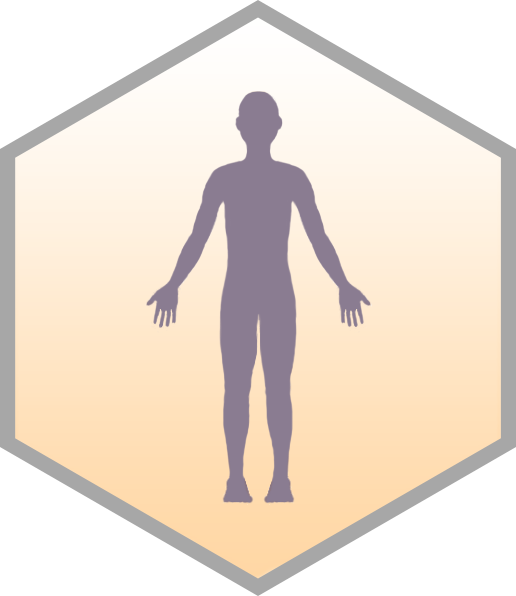
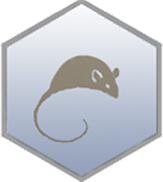
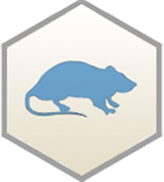
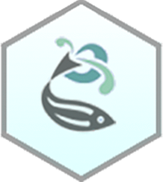
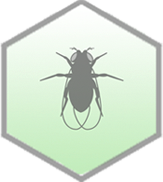
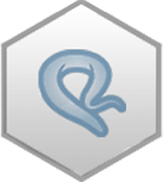
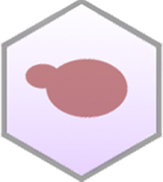
Sequence
The S. cerevisiae Reference Genome sequence is derived from laboratory strain S288C. Download DNA or protein sequence, view genomic context and coordinates. Click "Sequence Details" to view all sequence information for this locus, including that for other strains.
Analyze Sequence
S288C only
BLASTN | BLASTP | Design Primers | Restriction Fragment Map | Restriction Fragment Sizes | Six-Frame Translation
S288C vs. other species
BLASTN vs. fungi | BLASTP at NCBI | BLASTP vs. fungi
S288C vs. other strains
Protein
Basic sequence-derived (length, molecular weight, isoelectric point) and experimentally-determined (median abundance, median absolute deviation) protein information. Click "Protein Details" for further information about the protein such as half-life, abundance, domains, domains shared with other proteins, protein sequence retrieval for various strains, physico-chemical properties, protein modification sites, and external identifiers for the protein.
- Summary
- Tsa1p is 196 amino acids long, slightly longer-lived, very high in abundance; 5 homodimers of Tsa1p can assemble into a toroid-shaped decamer, with the active sites in the enzyme being shared between individual dimers in the decamer; oligomerization is promoted by aromatic residues at the decamer-building interface, substitution of which can destabilize the decamer; N-glycosylated on N165, acetylated on K29 and K132, ubiquitinylated on 6 lysines, sumoylated on 5 lysines, succinylated on 5 lysines, phosphorylated on 9 residues
- Length (a.a.)
- 196
- Mol. Weight (Da)
- 21583.8
- Isoelectric Point
- 4.77
- Median Abundance (molecules/cell)
- 103335 +/- 66024
- Half-life (hr)
- 10.9
Alleles
Curated mutant alleles for the specified gene, listed alphabetically. Click on the allele name to open the allele page. Click "SGD search" to view all alleles in search results.
View all TSA1 alleles in SGD search
Gene Ontology
GO Annotations consist of four mandatory components: a gene product, a term from one of the three Gene Ontology (GO) controlled vocabularies (Molecular Function, Biological Process, and Cellular Component), a reference, and an evidence code. SGD has manually curated and high-throughput GO Annotations, both derived from the literature, as well as computational, or predicted, annotations. Click "Gene Ontology Details" to view all GO information and evidence for this locus as well as biological processes it shares with other genes.
- Summary
- Thioredoxin peroxidase involved in control of cellular redox homeostasis and response to oxidative stress; localized on polysomes and in cytoplasm
View computational annotations
Molecular Function
- Manually Curated
- enables kinase regulator activity (IMP)
- enables peroxiredoxin activity (IDA)
- enables ribosome binding (IDA)
- enables thioredoxin peroxidase activity (IMP, IDA)
- enables unfolded protein binding (IDA, IMP)
Biological Process
- Manually Curated
- involved in cell redox homeostasis (IDA, IMP)
- involved in cellular response to dithiothreitol (IMP)
- involved in cellular response to heat (IDA)
- involved in cellular response to oxidative stress (IMP, IGI, IDA)
- involved in DNA damage checkpoint signaling (IGI)
- involved in DNA protection (IMP)
- involved in protein folding (IDA, IMP)
- involved in regulation of gluconeogenesis (IMP)
- involved in response to hydroperoxide (IMP)
Phenotype
Phenotype annotations for a gene are curated single mutant phenotypes that require an observable (e.g., "cell shape"), a qualifier (e.g., "abnormal"), a mutant type (e.g., null), strain background, and a reference. In addition, annotations are classified as classical genetics or high-throughput (e.g., large scale survey, systematic mutation set). Whenever possible, allele information and additional details are provided. Click "Phenotype Details" to view all phenotype annotations and evidence for this locus as well as phenotypes it shares with other genes.
- Summary
- Non-essential gene in reference strain S288C; null mutant is hypersensitive to oxidative stress and shows decreased anaerobic growth rate, increased mutation frequency, sensitivity to DNA-damaging factors, such as UV, 4-NQO and hydroxyurea
Classical Genetics
- null
- acid pH resistance: increased
- anaerobic growth: decreased rate
- chemical compound accumulation: increased
- chromosome/plasmid maintenance: abnormal
- chromosome/plasmid maintenance: decreased
- chromosome/plasmid maintenance: decreased rate
- fermentative metabolism: decreased
- growth in exponential phase: decreased rate
- hydrostatic pressure resistance: decreased
- metal resistance: decreased
- mitotic recombination: increased
- mitotic recombination: increased rate
- mutation frequency: increased
- mutation frequency: increased rate
- mutation frequency: normal
- oxidative stress resistance: decreased
- oxidative stress resistance: increased
- protein/peptide distribution: abnormal
- replicative lifespan: decreased
- replicative lifespan: increased
- resistance to chemicals: decreased
- stress resistance: decreased
- telomere length: increased
- UV resistance: decreased
- vegetative growth: decreased
- overexpression
- reduction of function
- gain of function
- null
- auxotrophy
- chemical compound accumulation: abnormal
- chemical compound accumulation: increased
- competitive fitness: decreased
- competitive fitness: increased
- haploinsufficient
- heat sensitivity: increased
- mitotic recombination: increased
- mutation frequency: increased
- nutrient utilization: decreased
- oxidative stress resistance: decreased
- replicative lifespan: decreased
- resistance to chemicals: decreased
- resistance to chemicals: increased
- silencing: decreased
- stress resistance: decreased
- toxin resistance: decreased
- toxin resistance: increased
- utilization of nitrogen source: decreased rate
- UV resistance: decreased
- vacuolar morphology: abnormal
- viable
- overexpression
Large-scale Survey
Interaction
Interaction annotations are curated by BioGRID and include physical or genetic interactions observed between at least two genes. An interaction annotation is composed of the interaction type, name of the interactor, assay type (e.g., Two-Hybrid), annotation type (e.g., manual or high-throughput), and a reference, as well as other experimental details. Click "Interaction Details" to view all interaction annotations and evidence for this locus, including an interaction visualization.
- Summary
- Tsa1p interacts physically with proteins involved in chemical response and transcription; TSA1 interacts genetically with genes involved in DNA repair; the tsa1 null mutant is viable, the null mutant of paralog tsa2 is viable, the tsa1 tsa2 double mutant displays a synthetic growth defect
1069 total interactions for 656 unique genes
Physical Interactions
- Affinity Capture-MS: 119
- Affinity Capture-RNA: 19
- Affinity Capture-Western: 14
- Biochemical Activity: 2
- Co-crystal Structure: 2
- Co-fractionation: 1
- Co-localization: 2
- Co-purification: 6
- Proximity Label-MS: 6
- Reconstituted Complex: 12
- Two-hybrid: 4
Genetic Interactions
- Dosage Growth Defect: 2
- Dosage Rescue: 3
- Negative Genetic: 434
- Phenotypic Enhancement: 20
- Phenotypic Suppression: 13
- Positive Genetic: 62
- Synthetic Growth Defect: 246
- Synthetic Haploinsufficiency: 1
- Synthetic Lethality: 89
- Synthetic Rescue: 12
Regulation
The number of putative Regulators (genes that regulate it) and Targets (genes it regulates) for the given locus, based on experimental evidence. This evidence includes data generated through high-throughput techniques. Click "Regulation Details" to view all regulation annotations, shared GO enrichment among regulation Targets, and a regulator/target diagram for the locus.
- Regulators
- 14
- Targets
- 0
Expression
Expression data are derived from records contained in the Gene Expression Omnibus (GEO), and are first log2 transformed and normalized. Referenced datasets may contain one or more condition(s), and as a result there may be a greater number of conditions than datasets represented in a single clickable histogram bar. The histogram division at 0.0 separates the down-regulated (green) conditions and datasets from those that are up-regulated (red). Click "Expression Details" to view all expression annotations and details for this locus, including a visualization of genes that share a similar expression pattern.
Summary Paragraph
A summary of the locus, written by SGD Biocurators following a thorough review of the literature. Links to gene names and curated GO terms are included within the Summary Paragraphs.
Last Updated: 2024-11-12
Literature
All manually curated literature for the specified gene, organized into topics according to their relevance to the gene (Primary Literature, Additional Literature, or Review). Click "Literature Details" to view all literature information for this locus, including shared literature between genes.